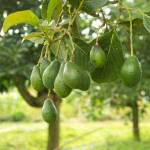
Kenya avocado processing industry has grown in a couple of years since the establishment of factories in the Mt. Kenya region and places like Murang’a by key exporters in recent years. The current median growth rate of raw avocados and processed oil is 1.5 percent. This has remained steady since 2007. The biggest competitors like South Africa have had an impaired growth margin in recent years of negative 3.4 percent. This indicates that Kenya has potential to export to new destinations like China.
Reports from CNBC indicate that the Chinese middle-class is yearning for avocados either in table or processed form more than ever before. The projections put the growth of the avocado imports to the country to expand by over double the current margins in 2018. Reports from the biggest distribution company of avocados in the world based in California indicate that China’s market has been doubling its potential yearly. The current trend will likely continue in coming years. There has also been a growth rate of 10 to 15 percent per year in countrywide demand.
In 2014, about 4000MT of the fruit jetted into China from across the globe, a quantity growth of 127 times since 2010. This is after the country created a policy to allow imports of more agricultural produce to feed its population of some 1.4 billion. So far, the countries eyeing the market include Peru, Mexico and potentially Kenya.
The main cities in China that are deriving the demand include Shanghai, Guangzhou and the capital Beijing. Most of the buyers are suburban middle-class families. There is also the impetus of Chinese expatriates in avocado-growing countries like Kenya who are driving the demand.
Some of the ways that local exporters can keep up with the oriental demand is in packing and labeling. This is because the consumers have become smart at selection rather than in the past when they just chose any avocado. Packaging by the level of ripeness is now enabling grocery shoppers to choose wisely. Consumers can make purchases depending on a desire for ready consumption or for storage. For instance, they can opt for ripe fruit shipments for immediate use or still green fruits for home preservation. Smart form of labeling that keeps these two ideals in mind is also creating a database of the number of consumers who prefer semi-ripe or fully ripe fruits to guide future sales.
In terms of processing, avocado oil in Kenya is concentrated in just a couple of producers who have competitive supply margins. However, there is still low supply to feed the high demand locally and internationally. Most of the production of oil is from Grade 2 fruits, which means the less desirable ones for export. This grade is usually physically unattractive but quite healthy inside. Rather than go to waste, it creates the nutritious unrefined oil.
In short, Kenya currently has a high potential to improve its supply chain of processed and fresh avocado to new markets like China. With the current conducive political relations between the two countries, avocado imports to China can therefore be quite viable for Kenya. This is important because around 80% of local avocados, mostly fuerte, are consumed in the country while the remainder, mostly hass, undergoes processing and raw export.

